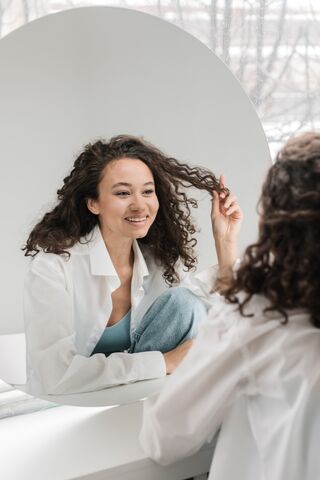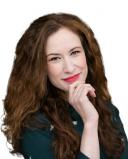Beauty
Is Our Idea of the “Ideal” Body Malleable?
Your view of the "perfect body" may depend on the other bodies you see.
Posted February 16, 2021 Reviewed by Abigail Fagan

Key Points: People often think that beauty ideals are fixed and unchangeable, but new research suggests that they depend on the people around you. Representation of all body types may therefore lead society's ideals to change and evolve.
In many countries, the current “beauty ideal” for women is thin and toned, with “curves in the right places.” This beauty ideal is depicted everywhere, from the movies and TV shows we watch, to what we see when we scroll through social media.
It may be hard to believe that the beauty ideal was ever different, especially when what we think of as beautiful seems so “true.” Reflecting on other time periods, though, we know that beauty ideals change throughout history: For example, think Marilyn Monroe in the 1950s and 1960s, and the “Rubens ideal” depicted in many 17th-century paintings.
In two recent studies, researchers at Monash University in Australia investigated just how flexible our idea of beauty can be.
How the Study Identified Body Ideals
In the two studies, female participants (19-75 years old) viewed a series of “arrays.”
Each array consisted of a line-up of nine computer-generated female bodies. Based on prior research, the team selected four body types that are most often chosen by other women to be their “ideal.” These were two “slightly underweight” body types (corresponding to body mass index [BMI] 16.64-18.26) and two “normal weight” body types (corresponding to BMI 19.79-23.35). Each array consisted of these four “ideal” bodies, plus five additional bodies that were either larger or smaller. The arrays differed based on the proportion of larger or smaller bodies that made up these five additional bodies.
Note that the labels for body size the researchers used are based on the World Health Organization’s (WHO) classification for BMI; I have used these terms in keeping with the researchers’ own language in the research report.
In both studies, every participant looked at 90 different arrays, each of them varying based on the proportion of larger and smaller bodies in the set. For each array, participants were asked to choose the body that was closest to their “ideal” body.
The results showed that participants selected larger bodies as their ideal when the other bodies in the arrays were mainly larger bodies. Within these larger-body arrays, their chosen ideal tended to correspond to a “normal weight” body size.
Conversely, participants selected smaller bodies as their ideal when the other bodies in the arrays were mainly smaller bodies. Within these smaller-body arrays, their chosen ideal tended to correspond to a “slightly underweight” body size.
The main difference between Study 1 and Study 2 is that the additional bodies included in the arrays were at the more extreme ends of the weight spectrum. The pattern of findings was the same, in that participants chose larger ideal bodies when there were more larger bodies in the arrays (and vice versa). Interestingly, their chosen ideal bodies still tended to correspond to the “normal weight” (for larger-body arrays) and “slightly underweight” (for smaller-body arrays) body sizes.
How to Change Body Ideals in the Future
Based on these findings, we can conclude that our “ideal body” is surprisingly malleable, and depends on who else we are looking at. When we mainly see larger bodies, we tend to select a larger ideal body. When we mainly see smaller bodies, we tend to select a smaller ideal body.
Yet, there is a limit to how much we can sway beauty ideals: Exposure to bodies on the more extreme ends of the weight spectrum showed that women’s ideal bodies still centered on the middle area of the weight spectrum.
Overall, the findings help us to put current beauty ideals into perspective. Given that we mainly see women matching the current beauty ideal almost everywhere on (social) media, it is no wonder that we consider this particular body type to be ideal. But, this idea of beauty is not a fixed “truth.”
The findings also support the value of increasing body diversity in media images. Providing visibility and promoting acceptance and respect for all bodies – inclusive of different body shapes and sizes, ethnicities, ages, and so on – can help people to develop more flexible beauty ideals. The data would predict that exposure to a diversity of bodies would result in many women considering their “ideal” body to be “normal weight” rather than “underweight” (according to WHO classifications).
Considering that striving for an underweight body type leads to many women experiencing body dissatisfaction and disordered eating, promoting more flexible beauty ideals could help women to develop a more positive body image and well-being.
References
Aniulis, E., Sharp, G., & Thomas, N. A. (2021). The ever-changing ideal: The body you want depends on who else you’re looking at. Body Image, 36, 218-229.




